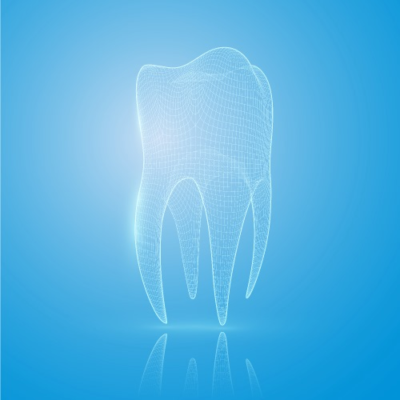Virtually all dental procedures require making impressions of the teeth and the surrounding oral structures. Until a few years ago, dentists used physical moldable materials for recording dental impressions. This process was uncomfortable and inconvenient for the patients. Patients also did not like the smell or taste of the impression materials.
Those days are gone now! Thanks to the digital revolution, dentists nowadays no longer need to make physical impressions. No need for the messy, gooey impression materials anymore. Nowadays, dentists rely on scanning equipment that digitally scans the dental structures in the mouth and then prepares a high-resolution, 3-D image.
 BUT HOW ARE DIGITAL IMPRESSIONS MADE?
BUT HOW ARE DIGITAL IMPRESSIONS MADE?
There are two types of digital scanning systems used by the dentist. One example emits a blue LED light and contains optical scanners that measure the reflectivity of the dental tissues. For this purpose, the dental tissues need to be coated with a special powder, to enhance their reflectivity. The data acquired by these scanners is then used to prepare a three-dimensional image of the teeth and the gums. The other type of dental digital scanner contains lasers that measure the distance of the dental tissues from the scanner and use this information to create a 3-D image of the dental tissues. Such scanners do not require any powder coating for making digital impressions.
Whatever the type of scanner your dentist will use for imaging, the 3D image will then be fed into specialized software, which allows the dentist to visualize all the dental structures in detail. Dentists can even rotate, angulate, and even magnify the images for better visualization. The imaging software allows your dentist to diagnose any underlying problems and prepare a comprehensive treatment plan that is customized according to your dental needs.
Depending on the requirement, your dentist will then digitally design the prosthesis, which is required for restoring or replacing your teeth. After digital designing, the next is the fabrication of the prosthesis. For this, your dentist will either send the digital impression including the information regarding the prosthesis to be designed, to the dental laboratory, or he or she will directly prepare the required prosthesis at the dental chairside using a milling machine (computer-aided machining or CAM) attached with the computer-aided design (CAD) machine.
SO, IS, ARE THE DIGITAL IMPRESSIONS BENEFICIAL? LET US TAKE A LOOK
The foremost advantage of the digital impression technology is that they are convenient and comfortable for the patients. Unlike physical impressions, which may taste unpleasant and cause nausea.
Secondly, digital impressions are much more accurate than physical impressions. This is because there is always room for error while making physical impressions, right from seating the impression tray on the teeth to making study models. This problem has been eliminated with digital impressions. The information acquired by the scanners can be shown in real-time on the dentist’s screen, or the digital images can then be saved and then opened on a computer. Furthermore, digital impressions can also be collected for future use.
Digital impressions also save time — no need to wait for the impression material to set. The digital scanners can make a digital image of your oral cavity in a matter of minutes!
Another advantage of the digital impression technology is the minimized risk of cross-contamination. No instruments or impression trays are involved. Your dentist will use a scanner to make an image, which will not touch your teeth or other dental structures. So, this technology is much safer in comparison to conventional physical dental impressions.
BUT ALL THAT GLITTERS IS NOT GOLD!
While digital impression technology is the future of restorative and implant dentistry, it will take some time before this technology becomes available in all dental practices throughout the world. This is because this technology is expensive, and not all dentists can afford to buy it. Currently, four major companies are offering digital impression technology for dentists. It is expected that as more advancement and innovation is made in the digital industry, more cost-effective and more straightforward digital impression solutions will also become available for dentists as well.



